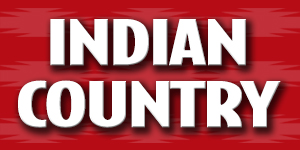Tribal leaders: Trump administration failed to consult on Education Department changes
By GRAHAM LEE BREWER
Associated Press
Tribal leaders and education advocates said the Education Department failed to meet a statutory requirement by not consulting with tribes before announcing the transfer of dozens of Native American education programs to other federal agencies.
This week, the Education Department said it would break off several of its main offices and hand over their responsibilities to agencies like the Department of Labor and the Department of the Interior. Under the plan, those two agencies will run several programs that fund and oversee the education of Native American children and college students. Tribal leaders and Native education organizations said the move will add to budgetary confusion and a possible breakdown ins services.
“This transfer brings no additional support to our schools, and merely shifts us from one inadequate system to another,” said Steve Sitting Bear, chairman of the Standing Rock Sioux Tribe. “This instability is unacceptable when the well-being and success of our students is at risk.”
The Standing Rock Sioux Tribe operates a K-12 school on the reservation that receives federal funding. Sitting Bear said he strongly objects to the plan, and the tribe was not consulted, as legally required, before the transfer of duties was announced. He said the change only adds to uncertainty and creates unnecessary layers of federal bureaucracy.
Ahniwake Rose, president of the American Indian Higher Education Consortium, said there are several unanswered questions about how funding for Tribal Colleges and Universities, or TCUs, that previously went through one department will now go through several different ones.
“When my TCUs have a question, they're going to be three agencies they might possibly have to go to for solutions. So we’re going to need really clear-cut roles, delineations for who does what, when, and where,” she said. “To be able to be part of the conversation as it’s being drafted would have been incredibly helpful.”
In a statement to The Associated Press, Assistant Secretary of Indian Affairs Billy Kirkland said the department plans to “engage closely” with tribes and education partners.
“We value the input we receive from tribes and stakeholders, and we remain dedicated to building a future where Native students have the tools, support, and opportunities they need to thrive for generations to come,” Kirkland said.
The Education Department has not yet initiated the transfers, and it does plan to conduct tribal consultation, said Madison Biedermann, a spokesperson for the Education Department. “As we take steps to implement the interagency agreement, we will engage with key stakeholders, including tribal leaders.”
The Labor Department did not respond to a request for comment.
Many in Indian Country said that consultation should have happened first.
“Tribes should be involved at every step in the process,” said Julia Wakeford, a policy director at the National Indian Education Association.
The education funding and resources the federal government provides to Native Americans are part of the country’s trust responsibilities, which are the legal promises that were made through treaties and acts of Congress in exchange for the land it took from tribal nations. Tribal leaders have said that the administration of those legal obligations have been uncertain and precariousever since the Trump administration began slashing federal spending and reducing the federal workforce.
Wakeford said the federal government should have begun consultation before the decision was made, and they’re asking the Trump administration to detail Education Department staff to the Bureau of Indian Education, a department within the Interior.
“Without them, there’s no way that the Bureau of Indian Education could have the necessary capacity,” she said.





